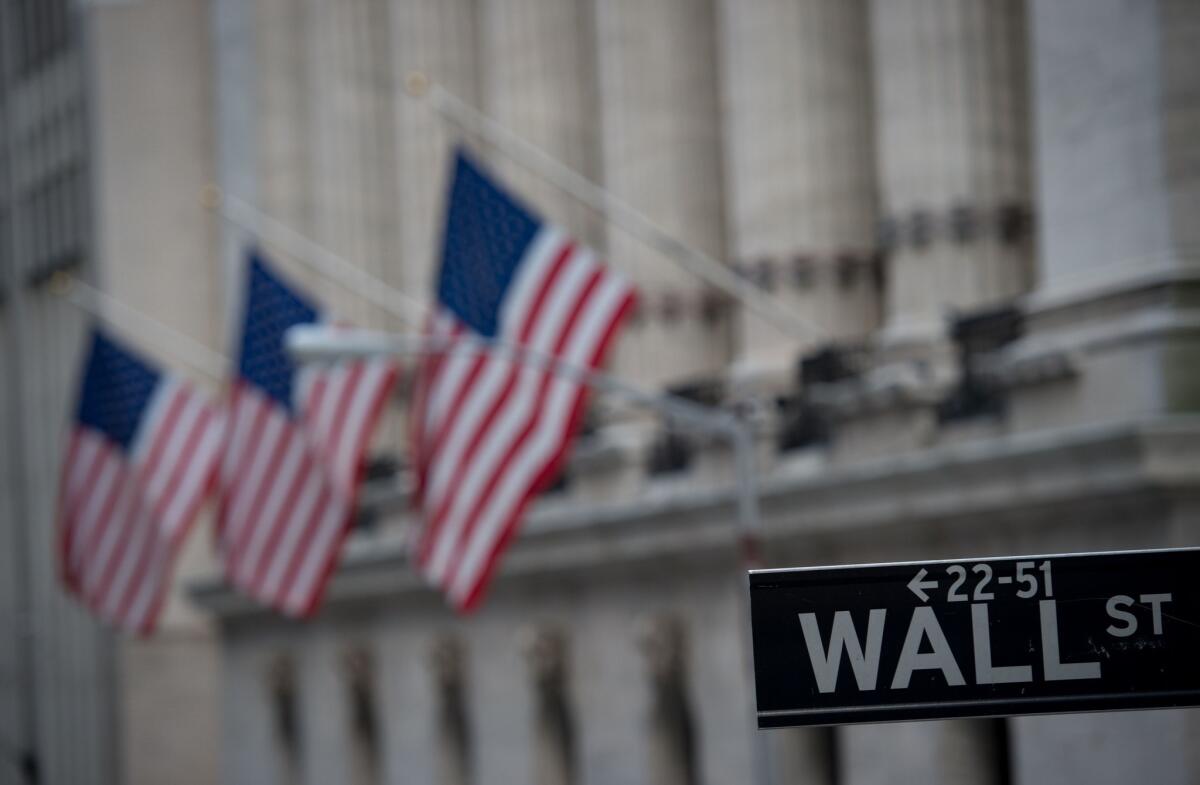S&P 500 nears record after stimulus progress, Fed moves

- Share via
The Standard & Poor’s 500 ticked up to the edge of its record Wednesday after the Federal Reserve pledged to keep buying bonds until the economy makes substantial progress from its virus-racked state.
In a mixed and muted day of trading, the S&P 500 rose 6.55 points, or 0.2%, to 3,701.17. It’s within roughly 1 point of its record set last week. The Dow Jones industrial average slipped 44.77 points, or 0.1%, to 30,154.54, and the Nasdaq composite rose 63.13, or 0.5%, to 12,658.19, setting a record high for the second straight day.
Massive efforts by the Fed have helped underpin the market since the spring, and the central bank said Wednesday that it will buy at least $80 billion in Treasurys each month and $40 billion in agency mortgage-backed securities until “substantial further progress” has been made. It also said again that it would keep short-term interest rates at their record low of nearly zero, as it keeps the accelerator floored on its support for the economy.
But investors are more interested in what’s happening across Washington, where Democrats and Republicans in Congress appear to be nearing a deal to deliver another dose of financial support for the economy. A deep partisan divide has stymied such a deal for months, but a rush of recent momentum has hopes rising that a compromise could be sealed soon to send direct payments of perhaps $600 to most Americans, among other measures.
Economists, investors and even Fed officials have been saying such support is crucial because the Fed’s tools alone can help the economy only so much. The lower interest rates ushered in by the Fed can help goose home prices and stocks on Wall Street, for example, but they can’t replace the paychecks lost by workers whose businesses have closed because of the pandemic.
The stakes are rising by the day for Congress to act. A report released Wednesday morning showed that retail sales sank 1.1% last month. It’s the second straight month of weakness, a much worse showing than the 0.3% decline that economists expected and the latest evidence that the renewed wave of coronavirus infections is ripping more chunks out of the economy.
Restaurants posted sharp declines in sales, and the numbers may only get worse. Just this week, restaurants in New York City were limited to outdoor dining, even as colder temperatures and snow arrive. Governments around the country and world are bringing back varying degrees of restrictions on businesses to slow the spread of the virus. Even without lockdowns, the rising death toll of the pandemic is scaring customers away from businesses and normal economic activity.
If Congress can indeed reach a deal, it could help carry the economy through what’s expected to be a bleak winter, before one or more coronavirus vaccines can help the economy get closer to normal next year.
In the bond market, Treasury yields initially climbed after the Fed’s afternoon announcement, but they quickly receded. The yield on the 10-year Treasury rose to 0.92% from 0.91% late Tuesday. It was at 0.94% shortly after the Fed’s announcement.
Bitcoin, the world’s largest cryptocurrency, topped $20,000 for the first time.
Investors also have been encouraged by signs that the European Union and the United Kingdom may finally broker a trade deal after the U.K.’s departure from the bloc. Germany’s DAX rose 1.5% and France’s CAC 40 gained 0.3%. The FTSE 100 in London rose 0.9%
Asian markets ended mostly higher.
More to Read
Inside the business of entertainment
The Wide Shot brings you news, analysis and insights on everything from streaming wars to production — and what it all means for the future.
You may occasionally receive promotional content from the Los Angeles Times.










